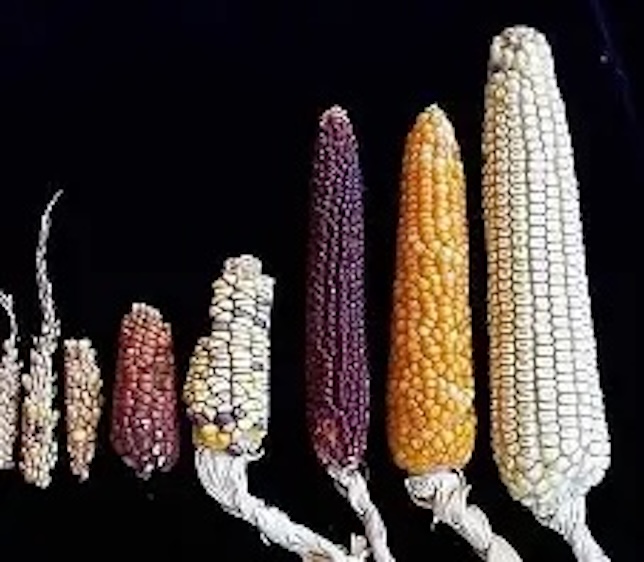MAINE-LY GARDENING: What’s in the garden? Corn!

 by Jude Hsiang
by Jude Hsiang
Mid-summer cookouts will feature a wealth of garden produce: green salads with tomatoes, watermelon, and, of course, corn on the cob. Even the most confirmed meat eater looks forward to this special summer treat.
We New Englanders are waiting for this season’s local sweet corn as we see corn in local groceries that was grown in Georgia, then Virginia, then New Jersey. It may remind us that the corn we know began as a grass in South America. The first people practicing agriculture, some 9,000 years ago, selected the largest seeds to grind for food and to plant. Eventually what we know as corn or maize developed and were traded from groups of peoples eventually reaching well into North America.
Over time the size of the ears grew and with more modern selection, different varieties were developed. We still have what was commonly known as “Indian Corn” which retained the ability to produce multicolored kernels. Corn as animal feed is now the most important crop economically and, by weight, is the largest of all grain crops worldwide. But for most folks, corn means sweet corn for eating off the cob, canned or frozen, or ground into meal for baking. And don’t forget popcorn!
This year’s wet spring delayed planting in the Central and Northeastern states. From large farms growing corn for animal feed to backyard gardeners looking forward to a small plot of sweet corn, the weather continues to cause concern. What is a summer barbeque without buttery sweet corn?
Because corn is a grass, pollination occurs by wind, not with the aid of insect pollinators. Home gardeners plant corn in square or rectangular plots rather than one lone row so that the pollen grains can easily be blown among the plants, moving from the seed-bearing tassels to the young ears where each stand of silk will catch and carry the pollen down into the ear to fertilize a kernel. When plucking the annoying silk from an ear of corn, remember that one single strand of silk was responsible for each one of the hundreds of tasty kernels.
While we Mainers wait for the arrival of sweet corn – from our garden or from the local farmers’ market – let’s recall the thousands of years and miles this summer treat traveled to reach our plates.
© Judith Chute Hsiang
Jude Hsiang Is a retired Extension Master Gardener instructor and member of the China Community Garden.
Responsible journalism is hard work!
It is also expensive!
If you enjoy reading The Town Line and the good news we bring you each week, would you consider a donation to help us continue the work we’re doing?
The Town Line is a 501(c)(3) nonprofit private foundation, and all donations are tax deductible under the Internal Revenue Service code.
To help, please visit our online donation page or mail a check payable to The Town Line, PO Box 89, South China, ME 04358. Your contribution is appreciated!


Leave a Reply
Want to join the discussion?Feel free to contribute!